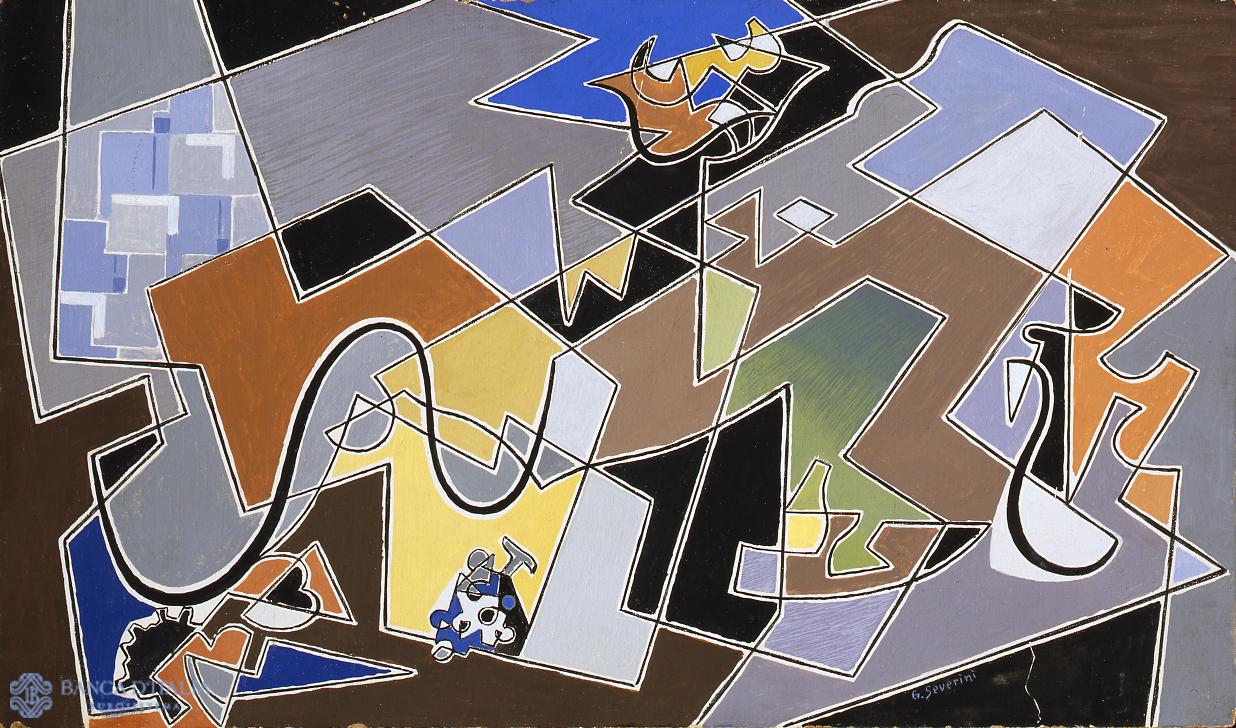Gino Severini was born in Cortona in 1883 and died in Paris in 1956. At the age of 16 he moved to Rome where he did all kinds of work in order to survive, nevertheless attending drawing classes in the evenings. In 1900 he met Boccioni and the following year Giacomo Balla in whose studio, together with Boccioni, he learned the Divisionist technique. In 1906 he moved to Paris where he continued his studies in Divisionism by observing the work of Seurat, attracted by his clear and constructive painting, gifts that to a certain extent and in a wholly original way he managed to make his own. In 1910 he was one of the signatories to the Manifesto dei Pittori Futuristi, subsequently acting as an intermediary between the Cubist Avant-Garde and the Italian group. He encouraged Boccioni and Carrà to come to Paris and once again it was he who organized the first Futurist exhibition at the Bernheim-Jeune gallery in 1912. For Severini, instead of opposing each other, the two movements should have merged into one fertile ground by associating their construction values and their dynamic and colourist tendencies. Within the Futurist movement, Severini had a place of his own, including in his choice of subject consisting of visions of cabarets and night clubs, crowded with dancers. His dynamism did not have the dramatic force and the vitality of Boccioni, resolving itself in a kaleidoscopic vision and a rhythmic inlaying of shattered forms and bright colours.
After 1915, foreseeing the European climate of a “return to order,” Severini resorted to classic modules and proportions inspired by the inclusion of “magic numbers”. In 1921 he expressed his personal ideas in an essay entitled Du Cubisme au Classicisme. After the Second World War, he regained his most authentic vein in Geometric Abstraction using bright and elegant colours.
Gino Severini
Gino Severini (Cortona 1883 - Paris 1956)
20th century AD

Compiler
Augusta Monferini


